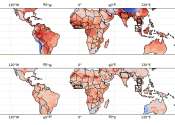Balancing AI and physics: Toward a learnable climate model
Artificial intelligence (AI) is bringing notable changes to atmospheric science, particularly with the introduction of large AI weather models like Pangu-Weather and GraphCast. However, alongside these advancements, questions ...









